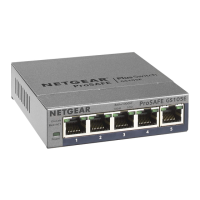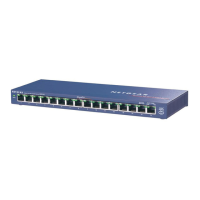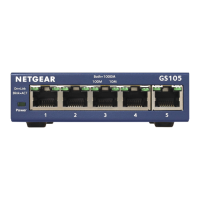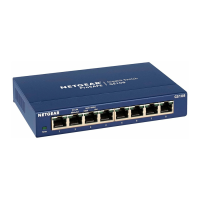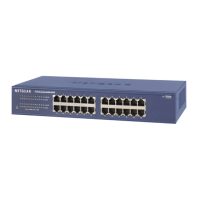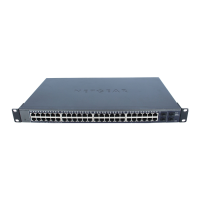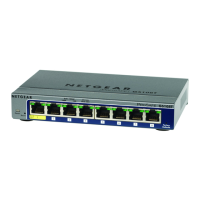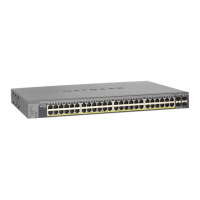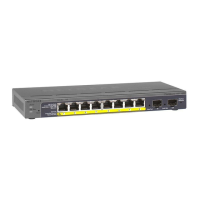Configuration Examples
361
ProSAFE 10-Gigabit Smart Managed Switch XS728T and XS748T User Manual
• Committed Burst Size. 128 KB
• Confirm Action. Send
• Violate Action. Drop
For more information about this page, see Configure a DiffServ Policy on page 216.
9. On the Service Configuration page, select the check box next to interfaces xg7 and xg8 to
attach the policy to these interfaces, and then click the Apply button. (See Configure
DiffServ Service Interfaces on page 221.)
All UDP packet flows destined to the 192.12.2.0 network with an IP source address from the
192.12.1.0 network that include a Layer 4 Source port of 4567 and Destination port of 4568
from this switch on ports 7 and 8 are assigned to hardware queue 3.
On this network, traffic from streaming applications uses UDP port 4567 as the source and
4568 as the destination. This real-time traffic is time sensitive, so it is assigned to a
high-priority hardware queue. By default, data traffic uses hardware queue 0, which is
designated as a best-effort queue.
Also the confirmed action on this flow is to send the packets with a committed rate of
1000000 Kbps and burst size of 128 KB. Packets that violate the committed rate and burst
size are dropped.
802.1X
Local area networks (LANs) are often deployed in environments that permit unauthorized
devices to be physically attached to the LAN infrastructure, or permit unauthorized users to
attempt to access the LAN through equipment already attached. In such environments you
might want to restrict access to the services offered by the LAN to those users and devices
that are permitted to use those services.
Port-based network access control makes use of the physical characteristics of LAN
infrastructures to provide a means of authenticating and authorizing devices attached to a
LAN port with point-to-point connection characteristics. If the authentication and authorization
process fails, access control prevents access to that port. In this context, a port is a single
point of attachment to the LAN, such as a port of a MAC bridge and an association between
stations or access points in IEEE 802.11 wireless LANs.
The IEEE 802.11 standard describes an architectural framework within which authentication
and consequent actions take place. It also establishes the requirements for a protocol
between the authenticator (the system that passes an authentication request to the
authentication server) and the supplicant (the system that requests authentication), as well
as between the authenticator and the authentication server.
The switch supports a guest VLAN, which allows unauthenticated users limited access to the
network resources.
